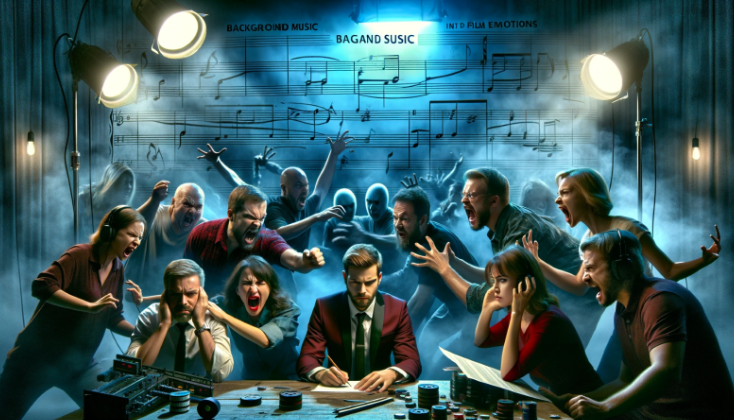Creating a Blockbuster Team: The Role of Emotional Atmosphere in Team Success.
My dear friend, Salliana Seven, composed the original music score for “The Drover’s Wife, The Legend of Molly Johnson” in 2021, and won Film Score of the Year, among other accolades and nominations. Very proud of her!
It sparked a conversation about the effect background music can have on the emotional response the audience experiences. Being a bit of a nerd, I even searched for academic papers to confirm this idea and found a couple of goodies. I won’t exhaust you with them here (if you really want them, just ask me!), but the conclusion was:
background music can induce emotional responses from the audience by generating the overall mood of a film (Holman, 2012).
A prior study found that the state of being affectively (affect = mood response) aroused can influence cognitive processes, whereby attention to visual stimuli is enhanced (McConnell and Shore, 2011)
The reason I am telling you this is because I draw parallels with the emotional state of teams in any organisation. Like the background music in a movie creating the emotional atmosphere, the emotional response to the work being asked of us will create an emotional resonance that permeates the team and the workplace.
We can have the best cast, director, script and producers, but if the background music (the team’s emotional state) is wrong, we do not have a blockbuster. It is not something we can ‘see’, or put our finger on - it isn’t tangible, but something is missing and causing an emotional atmosphere that isn’t serving the team.
In fact, as if to confirm this concept and how difficult it can be to visualise an emotional atmosphere, Chat GPT struggled to understand the concept and offer an image. This is the best of the lot!
In organisations, across many sectors, I work with high performing teams, under high pressure and in fast-moving environments. Teams that used to deliver impressive results but recently just are not achieving the same level of performance for various reasons.
We can see how the emotional response and ‘feeling sense’ of the team is expressed in common language:
Feeling unseen, burned out, taken advantage of, resentful, let down, unsupported, the weight of expectations, and institutional betrayal all have a deeply harmful effect on the wellbeing and performance of the team.
It takes skill for leaders to be able to read the emotional resonance of a team, particularly if the team feels the leader is partly to blame for their angst. Very often the ‘what is not being said’ is where the real work lies and my clinical experience over many years with groups and teams allows me to see and name what can often be unspoken and underlying.
My BETTER TEAMS TAKE-OFF program works to take the emotional temperature of the team, mentor the leader to be an effective ‘coach’ for the team and addresses the underlying causes.
Getting the team to address the underlying causes, and team leaders that are skilled in managing their people effectively is the motivation. Allowing Constructive Disruption, and Dynamic Disharmony to create a friction that serves the team well in a psychologically safe way is the goal.
This is so much more than Emotional Intelligence coaching, the process targets psychosocial hazards affecting team members, addresses Safety, Trust and Belonging and Mattering in the team.
If you want to know more about this process, I would love to share it with you. Or, if there is someone in your sphere that you feel would appreciate a conversation about teams that please share this newsletter with them.

